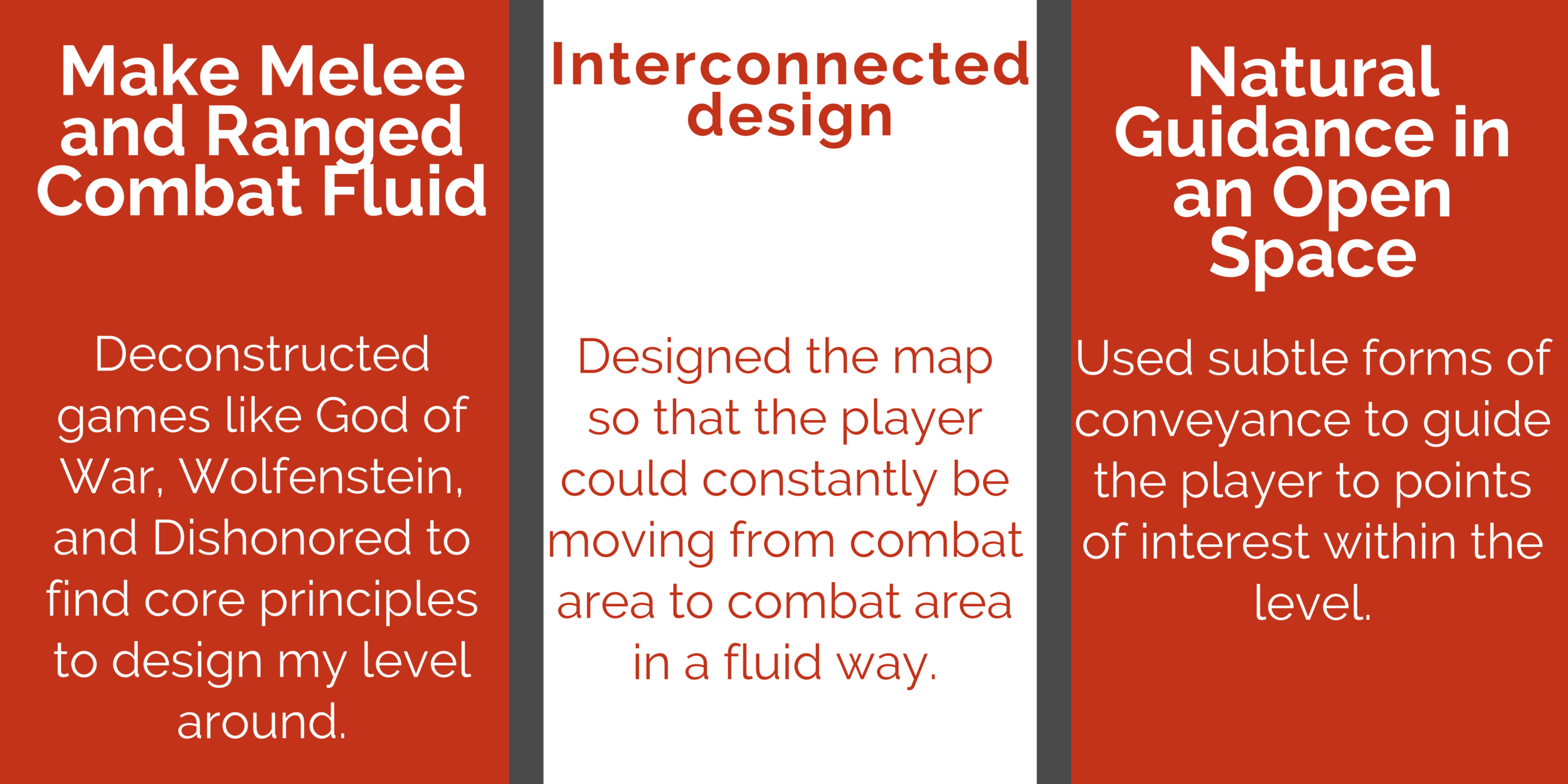Dying Light: Loading dock mayhem
Game Summary
Loading Dock Mayhem is a standalone mod for Dying light that effectively showcases how to best incorporate melee and ranged combat principles into a single, fluid level.
Players are tasked with investigating a loading dock that has a breach in the wall surrounding it. They will need to secure the breach and kill the remaining zombies in the area.
Engine: Dying Light
Platform: PC
Development Time: Ongoing
Team Size: Individual
Design Goals
Combining Melee and Ranged combat
The research
For researching on how to best combine melee and ranged combat, I looked at Gamasutra articles, read Let’s Design: Combat, and deconstructed games like God of War, Wolfenstein, and Dishonored.
The core melee principles:
Little to no half cover within the level.
This is largely because it can be extremely frustrating for the player to be trying to do combos or run away from danger only to bump into half cover that really isn’t useful to melee players.
Combat areas are often mini-arenas with clear boundaries.
Often combat takes place on one elevation.
As the player has to be right next to the enemy to attack, having multiple elevations for combat can make it difficult for the player to get to the enemy.
The number of enemies are extremely important.
The core ranged principles:
Cover is crucial.
Combat taking place over different elevations makes for more interesting situations.
Flanking routes helps the player be strategic in their approach.
Having a constant looping flow.
Conflicting principles
The two biggest conflictions dealt with how to use cover and combat taking place over multiple elevations.
To make cover with for both melee and ranged:
Focus on full cover within heavy combat areas.
Make sure all half cover is extremely clear, and does not interfere with movement. It is also ideal to attach half cover to full cover.
To make combat on different elevations work:
A minimum of 2 distinct ways to an elevated surface.
Make it so that anywhere the player can go, the enemies can go as well.
Interconnected design
Level overview
I divided up the level into 4 distinct “combat arenas”. This was done so that it made it easier for the player to parse, but also to better highlight the melee and ranged combat principles in different ways.
Interconnected design
As combat was a huge focus for this level, I wanted to make sure that the player could come and go from each area without any issues. Some elements that I included to allow for easy navigation between the areas:
Angled shipping boxes.
Zipline connected from the top of the tower to the ground level.
Multiple routes to get to the top of the loading dock hangar.
Natural Guidance
Since Dying Light is an open-world game, it is a bit more difficult to convey to the player exactly where they need to go as you cannot control exactly where the player will see every portion of your level from. Knowing this, I added multiple forms of conveyance to help the player feel clever as to where they should go and look, without explicitly telling them.
Leading lines
Trying to subtly hint to the player what their goal is, without explicitly telling them, I tried to use leading lines to guide the players eye to where they should look. At the beginning of the level, I placed quite a bit of taller objects to help lead the players eye to look at the bus attached to the crane, which is needed to close the breached gap.
Framing
Another form of conveyance I used was framing. Framing was a bit more difficult to pull off, because it relies on the player coming at something from a specific point. So, anytime I tried to frame something, it was immediately preceded by a pinch point to make sure the player was able to see their goal. Similar to the picture, I would leave a convenient gap between two train cars to nicely frame the door to the other side.
Iteration
Initial concept
This was the initial design for Loading Dock Mayhem. Over the course of the semester, I looked to incorporate more melee and ranged design principles from the research I was doing. From the initial blockout of the level, it seemed almost too open and made it more difficult for the player to “parse” each combat space. So I began to make each area feel like every section had “intentional” boundaries to make it easier to see where one section began and one ended. After that, I really worked on then making the sections feel connected and not just 4 distinct areas.












